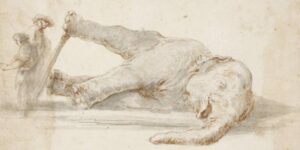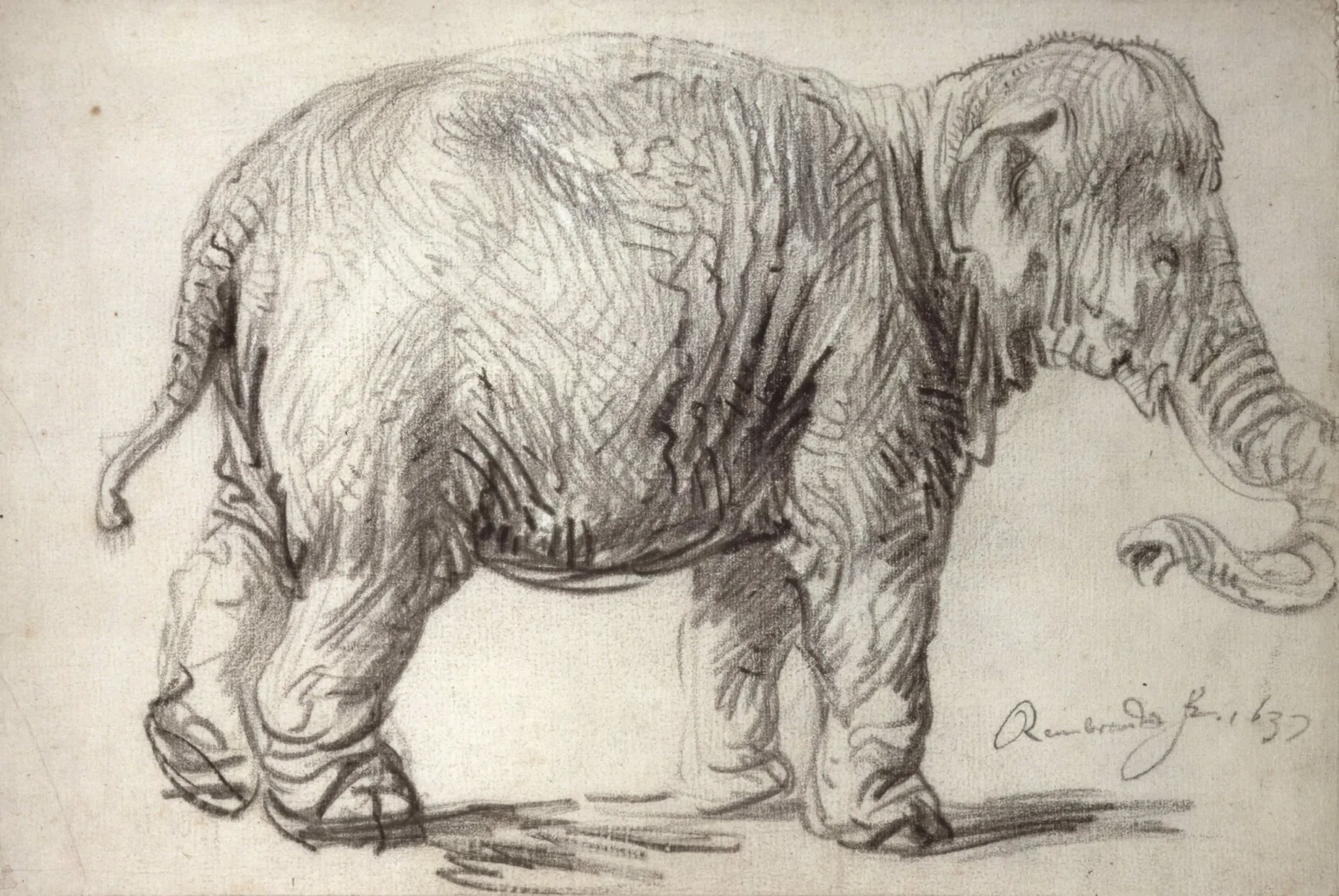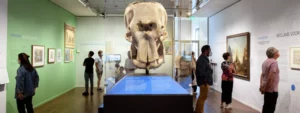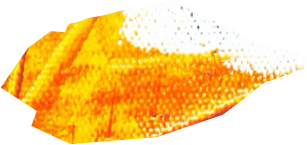She was famous across Europe: the Asian elephant Hansken. In the middle of the seventeenth century, she was the only living elephant on the continent and was toured to markets, fairs, and courts. When Hansken was in Amsterdam, Rembrandt drew her. Occasion for The Rembrandt House Museum to tell her life’s story in an exhibition for young and old. Hansken, Rembrandt’s Elephant presents works of art by Rembrandt and his contemporaries, historical documents, and a digital map on which you can follow Hansken’s trail through Europe. But also Hansken’s skull, which has been preserved and has been brought from Italy to The Rembrandt House Museum specially for this exhibition. The story of Hansken is astonishing, but also moving. She had to put up with a lot in her life; she was forced to go on long journeys and constantly had to make appearances. Besides the beautiful works of art made after her by Rembrandt and his contemporaries, this exhibition also sheds light on elephant welfare from today’s standpoint. Hansken, Rembrandt’s Elephant is on view until 29 August 2021 in The Rembrandt House Museum.
Rembrandt meets Hansken
In 1633 Hansken first appeared in Amsterdam. She could be seen that summer on the Kloveniersburgwal, just around the corner from Rembrandt. But the artist may have been in Friesland at the time. In the autumn of 1637 she was in Amsterdam once more and then Rembrandt seized his opportunity. He must have been filled with wonder, as he had never seen an elephant before in real life. The enormous, grey animal with her long trunk will have made a deep impression on him: he immortalized her on several occasions. Leonore van Sloten, curator at The Rembrandt House Museum: ‘Rembrandt’s drawings of Hansken really show him observing closely and with great interest: he drew her “after life”, with attention to every detail including her short hairs, skin folds and the movement of her feet and trunk. These drawings hang next to Rembrandt’s etching of Adam and Eve in Paradise in the exhibition. There, you see Hansken in the background. Rembrandt incorporated a contemporary element in the Biblical scene, which made the print even more appealing to buyers.
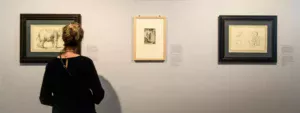
Hansken did not only leave traces behind in works of art. In 1647 she sank through a wooden bridge on the dyke beside the Amstel just outside the city, and ended up in the water – but remained unharmed. A short poem, The Elephant Bridge, by the seventeenth-century poet Jan Six van Chandelier, commemorates this event. The bridge was restored, but now made of stone and named The Elephant Bridge. In the same neighbourhood there was also an Elephant Path and a tavern called The Elephant.
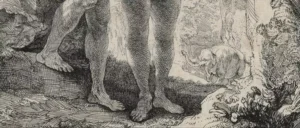
(detail).
Hansken liet haar sporen niet alleen achter in kunstwerken. In 1647 is ze op de dijk langs de Amstel, net buiten de stad, door een houten brug gezakt en in het water terechtgekomen – met goede afloop. Een kort gedichtje, ‘De Olifantsbrug’ van de zeventiende-eeuwse dichter Jan Six van Chandelier, gaat daarover. De brug werd hersteld, maar nu van steen gebouwd en sindsdien de Olifantsbrug genoemd. In de buurt liep ook het Olifantspad en er was een herberg die De Oliphant heette.
Hansken’s journey through Europe
How did Hansken actually wind up in Europe, and what happened to her? The initial impulse for her arrival came from Stadholder Frederik Hendrik, who was keenly interested in the territories colonized by the VOC. And so he requested several times that the VOC send him exotic animals, including an elephant. After the first ship carrying an elephant sank in 1629, a second ship arrived in Amsterdam in 1633. On board was the three-year-old Hansken, an elephant from Ceylon. She was placed in the country estate of Frederik Hendrik, Huis ter Nieuburg in Rijswijk. A few years later she was sold to Cornelis van Groenevelt, who would subsequently lead her through Europe for nearly twenty years. Pamphlets summoned the public to attend a presentation – Hansken was the prototype of later circus animals. Her life was short: owing to ignorance, she did not receive appropriate feed or care. She died, at the age of only 25 years, during a performance in Florence. Artist Stefano della Bella was present at the moment and captured the dead elephant in a pair of moving drawings. In collaboration with ARTIS, the IFAW and the Marjo Hoedemaker Elephant Foundation, Hansken, Rembrandt’s Elephant also incorporates a present-day perspective on elephant welfare in the seventeenth century and today
Activities for Young and Old, and The Book on Hansken
The exhibition also features a dedicated children’s route with activities for children from 6 to 12 years old. Learn to draw elephants like Rembrandt did, follow Hansken’s journey from Ceylon to Amsterdam, and put her skeleton back together. Learn all about Asian Elephants; what do you think Hansken’s life was like? The exhibition invites adults and children to join the discussion on these issues. In addition, The Rembrandt House Museum will present workshops for adults and children, ARTIS Academy is organizing a lecture and tour in the zoo and drawing workshops by the elephant enclosure by docents of ARTIS Ateliers, and the Vrije Academie is presenting talks on the exhibition. In the museum shop, the book about Hansken is available (in Dutch and in English): Rembrandt’s Elephant. The Story of Hansken, written by guest curator Michiel Roscam Abbing. And finally, Hansken is also going online! On 12 May, The Rembrandt House Museum will launch a talk show and podcast on the exhibitions on YouTube and Facebook. ‘Hansken, Rembrandts olifant’ is based on a concept of Michiel Roscam Abbing (Guest Curator and author of ‘Rembrandt’s Elephant. The Story of Hansken’) and Anneke Groen (concept developer). The exhibition was made in collaboration with ARTIS, the IFAW and the Marjo Hoedemaker Elephant Foundation, and made possible in part by the Prins Bernhard Cultuurfonds, Fonds 21, Stichting Zabawas, the Turing Foundation, the Gravin Van Bylandt Stichting, the P.W. Janssen’s Friesche Stichting and an anonymous fund.
